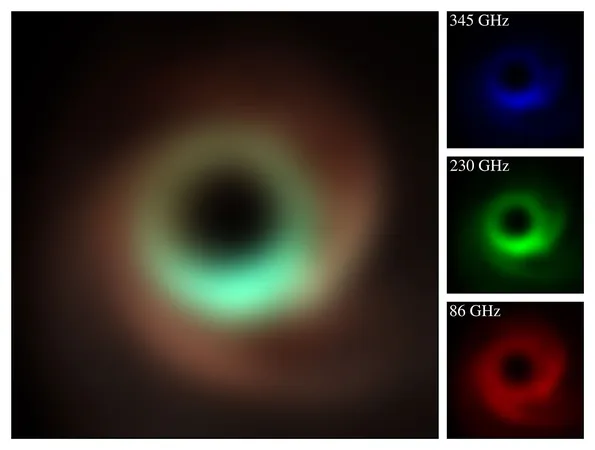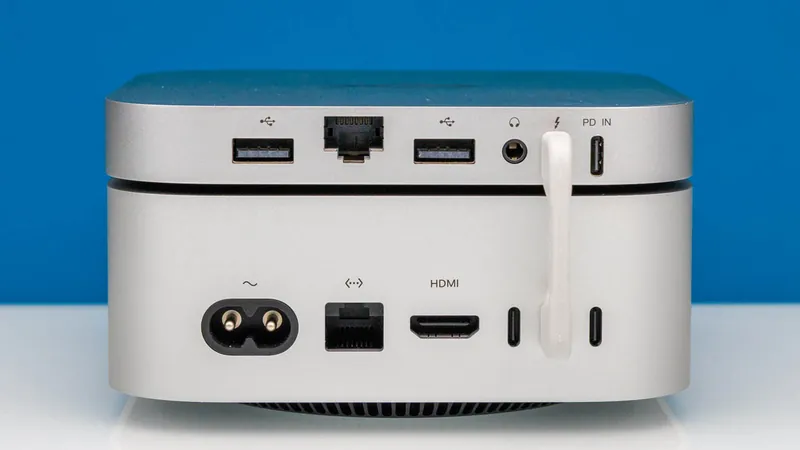
Get Ready to Witness Colorful Black Holes: A Breakthrough from the Event Horizon Telescope
2025-05-24
Author: Wei
Astronomers are on the brink of a groundbreaking innovation! The Event Horizon Telescope (EHT) has unveiled a revolutionary technique that enables them to observe the radio sky at multiple frequencies, promising to deliver stunning color images of supermassive black holes.
Understanding Color in the Cosmos
You might wonder, what does color mean in the realm of physics? Essentially, the color of light is determined by its frequency or wavelength. Longer wavelengths tilt towards red, while shorter ones dance closer to blue. Each unique frequency corresponds to its own distinct color.
While our human eyes discern color through three types of cones sensitive to red, green, and blue light, capturing colors beyond visible spectrum—like radio waves—is a different ballgame. Radio telescopes, however, can detect these colors, identified as bands, by capturing specific ranges of frequencies.
The Challenge: Capturing Dynamic Cosmic Events
The challenge lies in the fact that most radio telescopes traditionally observe only one band at a time. This means astronomers have to photograph an object repeatedly across different bands to composite a color image. Such a method works well for stable objects, but for dynamic celestial entities, it can be catastrophic—imagine taking separate snapshots of a moving train rather than a still landscape!
Introducing Frequency Phase Transfer (FPT)
Enter the game-changing method known as Frequency Phase Transfer (FPT). This innovative approach allows astronomers to counter atmospheric distortions that affect radio light. By monitoring the radio sky at a 3mm wavelength, the EHT team can effectively track how the atmosphere alters the light, making it similar to how optical telescopes use lasers for atmospheric corrections.
In a remarkable demonstration, they were able to observe both 3mm and 1mm wavelengths simultaneously, leveraging their findings to enhance and refine images captured at the 1mm wavelength. With this method, astronomers can now layer images from different radio bands, correcting them for atmospheric disturbances, ultimately crafting high-resolution color visuals.
A Bright Future Ahead
Though still in its infancy, this incredible new technique lays the foundation for future projects like the next-generation EHT (ngEHT) and the Black Hole Explorer (BHEX). Prepare yourself—soon we may be able to witness black holes not just in monochrome, but live and in dazzling color!


 Brasil (PT)
Brasil (PT)
 Canada (EN)
Canada (EN)
 Chile (ES)
Chile (ES)
 Česko (CS)
Česko (CS)
 대한민국 (KO)
대한민국 (KO)
 España (ES)
España (ES)
 France (FR)
France (FR)
 Hong Kong (EN)
Hong Kong (EN)
 Italia (IT)
Italia (IT)
 日本 (JA)
日本 (JA)
 Magyarország (HU)
Magyarország (HU)
 Norge (NO)
Norge (NO)
 Polska (PL)
Polska (PL)
 Schweiz (DE)
Schweiz (DE)
 Singapore (EN)
Singapore (EN)
 Sverige (SV)
Sverige (SV)
 Suomi (FI)
Suomi (FI)
 Türkiye (TR)
Türkiye (TR)
 الإمارات العربية المتحدة (AR)
الإمارات العربية المتحدة (AR)